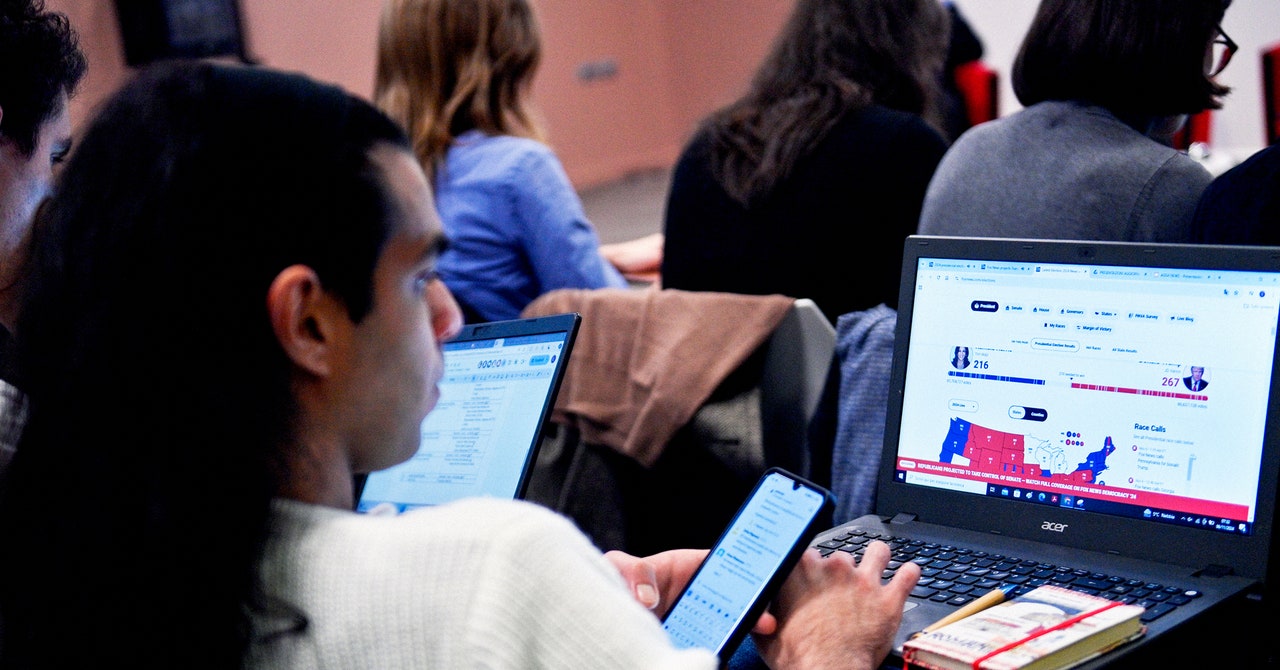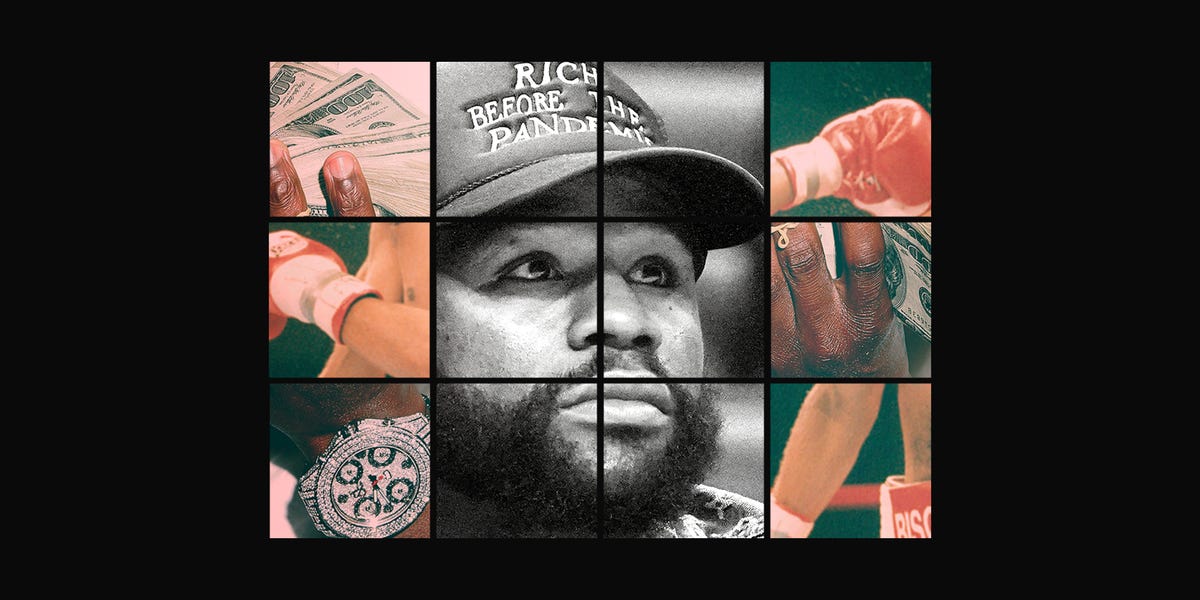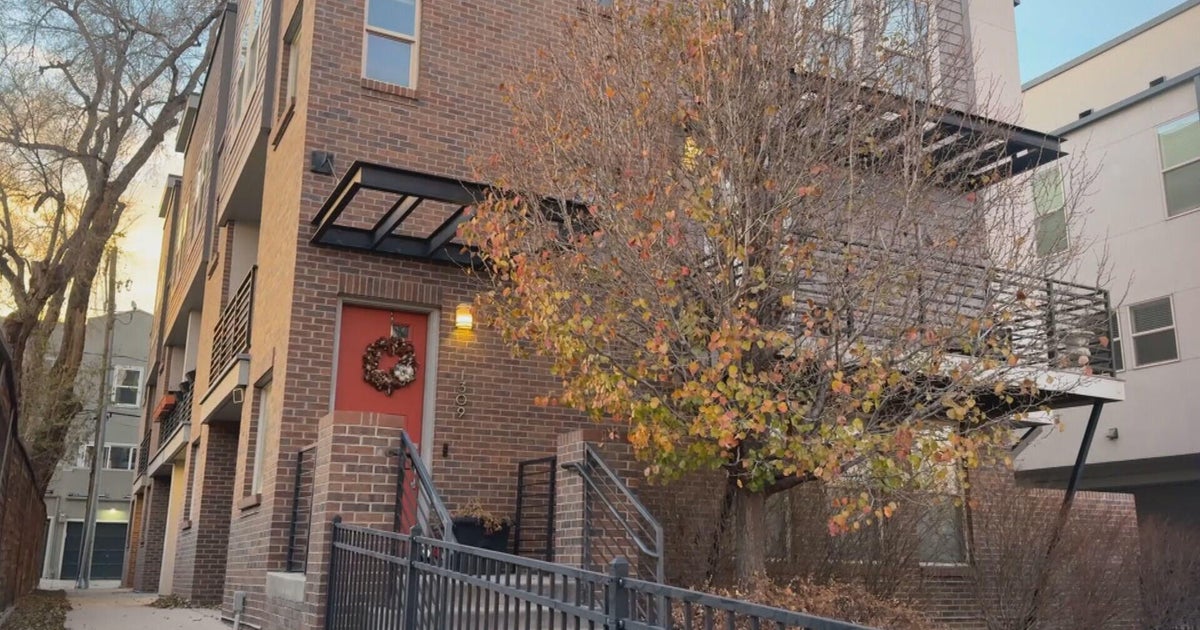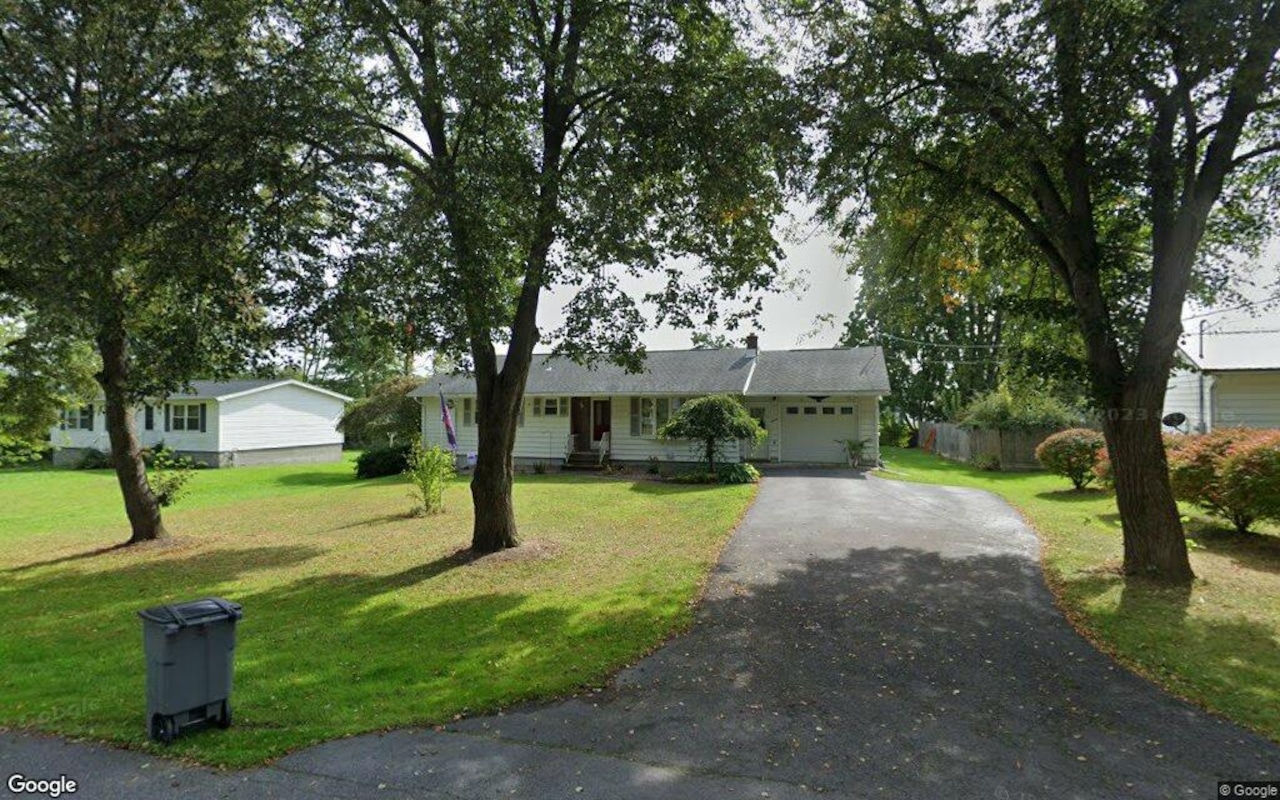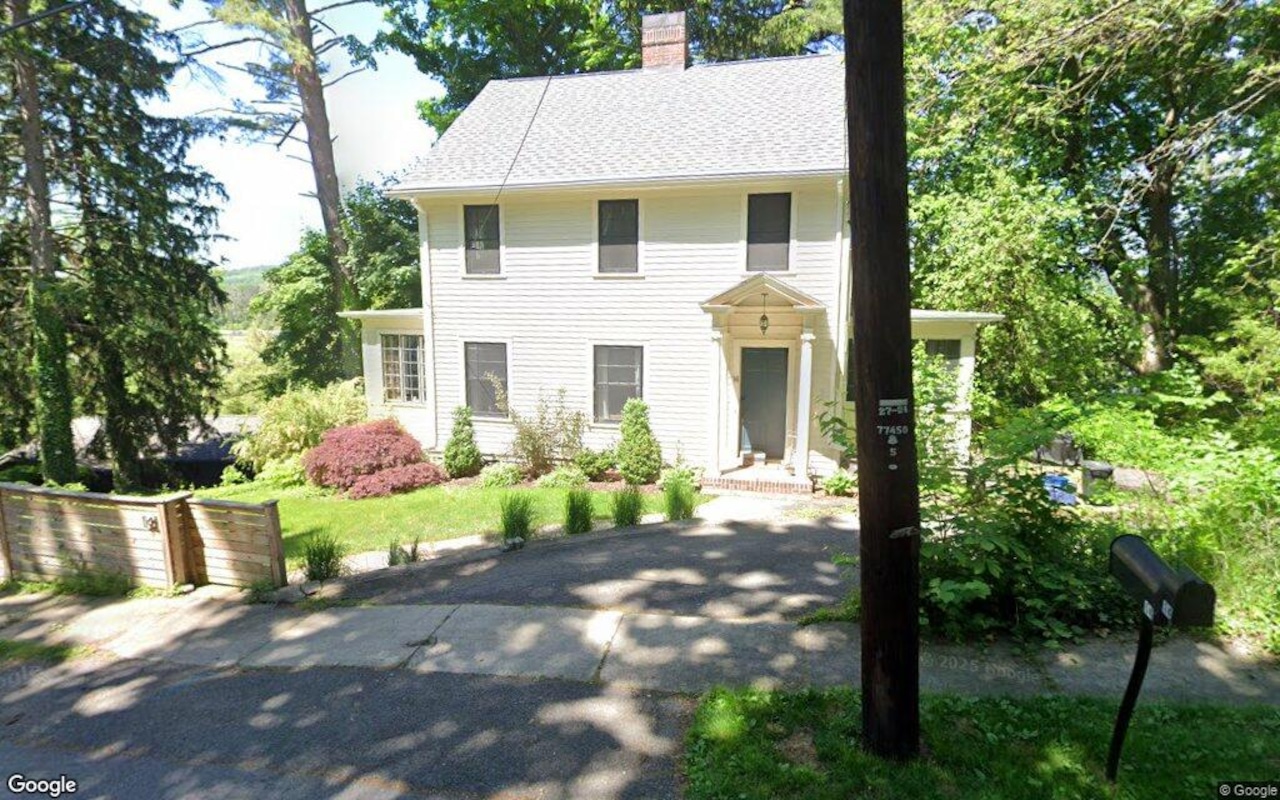F
or those who want Election Night to feel even more chaotic, I recommend checking out elections.omg.lol, a single-serving site that aggregates nine YouTube embeds from 24-hour news channels into a three-by-three grid. This site provides a constant stream of live coverage, complete with red-and-blue maps, talking heads, and man-on-the-street reports - it's nauseating, yet somehow helpful. I was one of many people watching multiple screens on election night, including CNN, my phone, and laptop. Each screen had its own use-specific content: CNN displayed Electoral College vote counts and countdowns for poll closures, while my iPhone cycled through TikTok, X, and Instagram.
As the results poured in, it became clear that nearly every available screen was filled with other screens, creating a dizzying array of bifurcating information. Even in VRChat, people were looking at embedded screens on their faces. Perhaps we've reached a point where too much is too much - maybe treating screen space as valuable could help us observe more by paying attention to fewer things.
The Monitor column explores the world of culture and technology, but it's also about what we pay attention to. Maybe reducing our focus or eliminating one screen entirely would be beneficial. TV viewership for the presidential election was down 25% this year, with only 42 million people watching across networks on Tuesday - a significant decrease from 2020.
In other news, "The Most Mysterious Song on the Internet" has been identified as "Subways of Your Mind" by FEX after nearly 17 years and the efforts of dedicated Redditors. It's been a long week, but at least we have Kyle MacLachlan dancing in a hot dog suit to look forward to.
